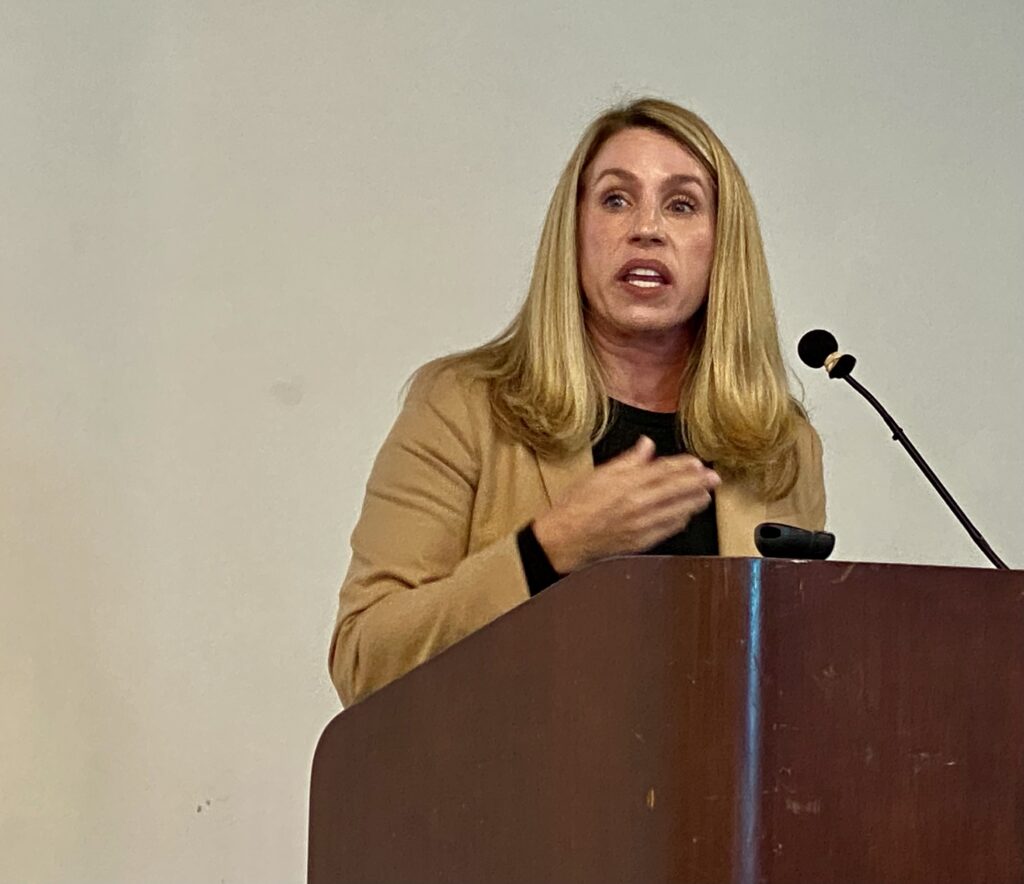In a fast-paced trip through the evolution of California’s water rights, attorney Valerie Kincaid explained how the system has gone from the “wild, wild west” to one pervaded by ever greater government creep.
By expanding its authorities under what had been thought of as several limited court decisions, state government is now essentially dictating operations on several watersheds, has ignored priority rights and is on the verge of amassing even more control under the guise of “modernization,” Kincaid told a packed room during a Water Association of Kern County luncheon on Tuesday.
“People say we have to modernize our system and that sounds dynamic and interesting,” Kincaid said. “But if you look at the actual proposals about what modernization would mean, it’s largely lifting of any jurisdictional restraint and expanding the authority of the (State Water Resources Control) Board.”
In actuality, Kincaid said, California’s water rights system isn’t that complicated.
“It’s just that certain people don’t like how it works.”
Kincaid was speaking strictly about surface water, but said the Water Board is also eyeing rights that cover groundwater.
As SJV Water reported in May, the Chair of the Water Board Joaquin Esquivel said as much during his keynote speech at the Water Association’s annual Water Summit.
“When we think of the work we need to do around SGMA (Sustainable Groundwater Management Act) and groundwater recharge, we know it has to happen,” Esquivel said of the board taking a stronger hand in water rights. “We know we have to change the system. Water rights can be there as a tool to be able to manage supplies through not just a drought but when there is water again. Our water rights system can be there to facilitate decisions on projects and help us make decisions, or they can be a hindrance.”
He repeatedly mentioned the need to “track the drops” to know how much water truly is available in watersheds, who has rights to that water, and exactly how much those rights holders can claim.
During that speech, Esquivel also noted the Board had curtailed the amount of water rights holder’s could take off of rivers in northern California under emergency drought orders. That included water held under pre-1914 rights.
Earlier this month, the Sixth District Court of Appeal slapped down that pre-1914 curtailment as those rights were established before California even had a water permitting board and so, are beyond its authority.
Yes, that was a win, Kincaid said Tuesday. But it was one battle within a vast array of decisions and regulations coming from the Water Board on a near daily basis that are designed to put government in greater control of the system.
“We have to be very aware and understand what’s happening at the state level,” she said. “It’s exhausting and incredibly expensive.”
Understanding what’s happening is vital, she said because as government has gained more control there has been less reliability for water users.
She noted that during the 2017 water year, one of the wettest on record, State Water Project users only got 85% of their contracted amounts.
“If contractors aren’t at 100% or more in a 2017 year, it spells trouble,” Kincaid said. “It spells trouble for the ability to operate farm systems and conduct commerce.”
She advised water managers and growers to become regionally water resilient through desalination technologies, greater water recharge programs or other ways. And they should collaborate with regulators, offer some water or funding to improve water quality and access for disadvantaged communities or species habitat, she added.
And when government crosses the line, push back, she said.
For example, in the recent drought curtailment order, she said, the water board cut rights for ag, but exempted water taken from rivers for “health and safety purposes,” urban uses.
“They jumped urban ahead of ag, when ag has the senior rights,” she said. “I get it, who’s going to say no to cutting off people’s drinking water. But there should be a requirement that urban repay that water to ag. The problem is people don’t understand what’s happening.”
Share this:
- Click to share on Facebook (Opens in new window)
- Click to share on Twitter (Opens in new window)
- Click to share on LinkedIn (Opens in new window)
- Click to share on Reddit (Opens in new window)
- Click to share on Tumblr (Opens in new window)
- Click to share on Pinterest (Opens in new window)
- Click to share on Pocket (Opens in new window)
- Click to share on Telegram (Opens in new window)
- Click to share on WhatsApp (Opens in new window)
- Click to print (Opens in new window)







